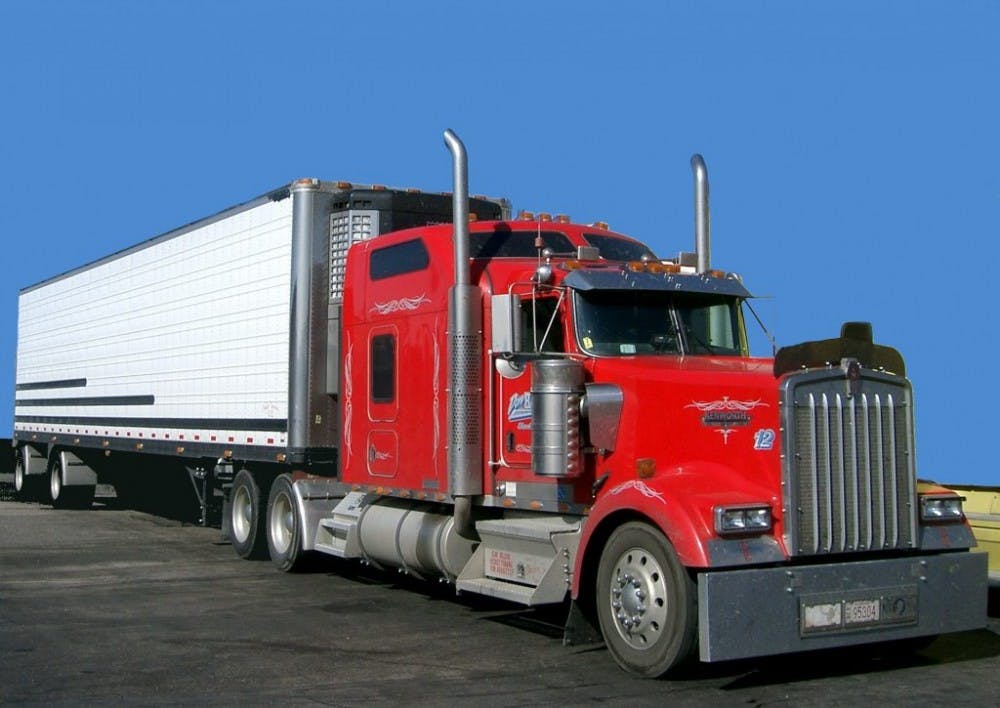The Nikola Motor Company is developing a Class 8 truck, the Nikola One, that comes equipped with hydrogen fuel cell technology. Class 8 trucks are more commonly known as 18-wheelers, or semi-trucks, and have traditionally used diesel fuel as a form of energy.
Diesel fuel exhaust contains environmentally harmful chemical compounds, including various nitrogen oxides and particulate matter. These emissions are carcinogenic, correlated with an increased risk of human cancer and organ damage, making these emissions a major public health concern.
Hydrogen fuel could reduce the environmental impact that diesel fuel has. There are many different types of hydrogen fuel cells, but their emissions are generally more environmentally friendly. In one example of a hydrogen fuel cell, hydrogen can react with atmospheric oxygen to produce a byproduct of water, a more environmentally friendly emission and less harmful to humans, which would be released as exhaust into the environment.
In addition to creating a more environmentally friendly than the current crop of diesel fuel semi-trucks on the road, Nikola claims that their truck is more powerful. They estimate that the truck will run at 1,000 horsepower and 2,000 pound-feet of torque, almost double the power of diesel fuel semis.
The hydrogen fuel cell in the Nikola One charges lithium-ion batteries. These batteries power the electric motors in the truck and minimize carbon and particulate matter emissions.
Currently, there are very few hydrogen fueling stations due to the lack of hydrogen-fuel cars on the road. There are three “everyday” hydrogen-fuel automobiles, and their markets are limited. The lack of hydrogen fueling stations is perhaps one reason why the market is so limited.
“The reason why cars are not powered by hydrogen fuel cells is not really about efficiency. It is more of an economy of scale and infrastructure issue,” Steven Doria, a senior chemical and biomolecular engineering major at Hopkins, said “It is really hard for a company that is selling a hydrogen-fueled car to make it into the market because the infrastructure for distributing hydrogen is not in place whereas the infrastructure for distributing gasoline is there.”
However, one of the hydrogen-fuel cars available for commercial use, the Toyota Mirai, has been expanding its market. In 2014, the automobile was exclusively marketed in Japan but now has markets in parts of the United States and several European countries.
If there are people willing to buy more hydrogen-fuel cars, companies may be willing to invest in the infrastructure for distributing hydrogen.
Nikola Motor Company also plans in aiding this effort: The company is working to build over 300 hydrogen fueling stations in the United States and Canada starting in 2018. The Nikola One has shown promise already as various companies have reserved almost 7,000 semi-trucks for purchase as they are released.
The Nikola One will have the ability to drive for up to 1,200 miles without refueling, higher than the current operational range for diesel trucks of 750 miles.
This could be worrying for truck drivers, who often face health concerns of their own due to lack of movement, since they would be more likely to drive for longer hours.
A report by the Centers for Disease Control in 2015 revealed 27 percent of long-haul truck drivers, the type that drive Class 8 trucks, revealed that they had not any vigorous physical activity in the past week. Such behaviors can contribute to poorer health outcomes. Indeed, nearly 70 percent of long-haul truck drivers were obese, more than double the prevalence of obesity in the United States.
The Nikola Motor Company wishes to produce a truck that can benefit the environment and improve the overall population’s health. However, they may want to consider the health of those who are driving their trucks, long-haul truck drivers.





